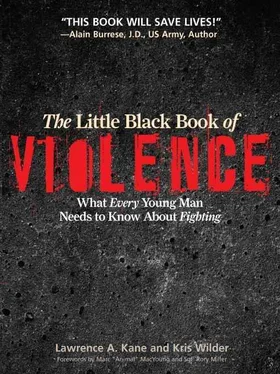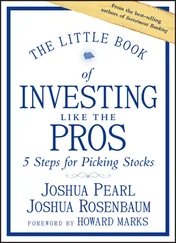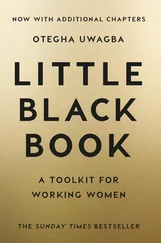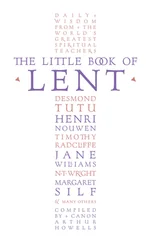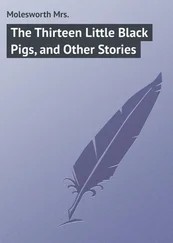The topic of violence is far greater than anyone can cover in a single book. The following is a list of authors whose texts we highly recommend for further study. The authors are arranged alphabetically.
Massad Ayoob is director of the Lethal Force Institute, an organization that trains 800 to 1,200 personnel per year in the judicious use of deadly force, armed and unarmed combat, threat management for police, and advanced officer survival in four countries. A retired police lieutenant, firearm, weapon, and unarmed combat expert, his books, articles, and classes teach law enforcement professionals and civilians realistic, street-worthy self-defense techniques. He appears selectively as a court-accepted expert witness in the areas of dynamics of violent encounters, weapons, self-defense, police training, and survival /threat management tactics and principles.
• Ayoob, Massad. Gun-Proof Your Children . Concord NH: Police Bookshelf, 1986.
When Kane was eight years old, he spent the night at his friend Craig’s house for a sleepover birthday party. One of the boys discovered a loaded .38 caliber revolver hidden in a dresser drawer, pulled it out to show the rest of the kids, and began passing it around. Remembering what his father had taught him about safety, Kane checked the cylinder, discovered that the gun was loaded, and removed the ammunition before handing it to one of the other kids to play with, undoubtedly saving someone’s life, quite possibly his own. If you own firearms and have children or have relatives who have children who may visit you, this book is a must read. Even if you hate firearms, it is good to know a bit about gun safety. This book is fairly short, yet well written, with practical advice that can keep your children safe.
• Ayoob, Massad. In the Gravest Extreme: The Role of the Firearm in Personal Protection . Concord NH: Police Bookshelf, 1980.
This book was required reading for a defensive handgun course that Kane took over 20 years ago and still remains relevant today. Among other things, it answers the all important question, “when can I pull the trigger and stay out of jail.” This book is well written, easy to read, and offers truly sound advice. It covers several important subjects such as common sense about carrying guns, guns in your store, guns in your car, guns in your home, guns on the street, how to choose a defensive firearm, basic gun fighting techniques, what caliber bullet is appropriate for self-defense, and gun safety. The aftermath of violence section is also outstanding. The only drawback is that some technologies have changed a bit since its original release. For example, the Glock handgun, the .40 S&W caliber bullet, and pre-fragmented self-defense ammunition all did not exist at that time. Nevertheless, the vast majority of the information remains relevant and useful today.
• Ayoob, Massad. Stressfire, Vol. 1: Gunfighting for Police: Advanced Tactics and Techniques. New York, NY: Bantam Books (Police Bookshelf), 1983. This is a serious a book on gun fighting, something you will hopefully never have to do, but should you carry a weapon for self-defense, you must be able to understand and anticipate. Having debriefed hundreds of gunfight survivors, the author describes the tactics, techniques, and, most importantly, mindset, that can give you the best odds of survival. It covers important aspects such as stances, sighting, muzzle control, trigger control, and ammunition management in a well written, easy to read and understand, manner.
• Ayoob, Massad. The Truth About Self-Protection. New York, NY: Bantam Books (Police Bookshelf), 1983. Although some of the material is a bit dated, we still consider this one of the finest tomes on the subject matter ever written. It discusses what to do before, during, and after a violent encounter—morally, legally, and ethically identifying the appropriate to use countervailing force. It covers everything from walking down the street, to driving your vehicle, to securing your home. All manner of makeshift weapons as well as open hand defensive scenarios are discussed. It also provides a holistic set of criteria and considerations to help civilians decide whether to carry a firearm for self-defense.
Loren Christensen began his martial arts training in 1965, earning eleven black belts over the years, eight in karate, two in jujitsu , and one in arnis . He is a retired police officer with 29 years of experience in military and civilian law enforcement, where he specialized in street gangs, defensive tactics, and dignitary protection. A prolific author, he has written more than thirty books and hundreds of articles on the martial arts, self-defense, law enforcement, nutrition, prostitution, gangs, and post-traumatic stress disorder. He has also produced several DVDs.
• Christensen, Loren and Dr. Alexis Artwohl. Deadly Force Encounters: What Cops Need To Know To Mentally And Physically Prepare For And Survive A Gunfight. Boulder, CO: Paladin Enterprises, Inc., 1997.
While written for law enforcement officers, this important book can be very meaningful for civilians as well. It focuses not on tactics, but rather on the mental aspects of combat, especially the aftermath of violent encounters. The goal is to teach readers how to survive physically, mentally, and legally. It analyzes the nature of violence, provides a thorough explanation of fear and its effects on a person in combat, and portrays dozens of real-life survival stories to drive the important points home in a meaningful way. The insight on Post Traumatic Stress Disorder is particularly valuable for anyone who observes or participates in a violent incident.
• Christensen, Loren. Far Beyond Defensive Tactics: Advanced Concepts, Techniques, Drills, and Tricks for Cops on the Street . Boulder, CO: Paladin Enterprises, Inc., 1998.
While it is primarily aimed at police officers, martial artists and those interested in practical self-defense can really benefit from these materials as well. The author’s experience, sense of humor, and real-life adventures make it a quick, interesting read. Readers learn how to stay safe patrolling (or simply walking) the streets, protect their weapon, deal with multiple attackers, handle stronger, larger opponents, and otherwise deal with deadly threats. It is especially good for folks who do not have a martial arts background. It is a bit more strategic than tactical yet hits just the right blend. There is an introduction to the “right demeanor” (which is reminiscent of Verbal Judo by George Thompson), a large section on control techniques, principles and concepts, and important insights into the nature of fighting. The various scenarios in the training section are truly excellent. The chapter on how to create a witness is really outstanding and particularly useful.
• Christensen, Loren. Gangbangers: Understanding the Deadly Minds of America’s Street Gangs . Boulder, CO: Paladin Enterprises, Inc., 1999. Gangs are not only ubiquitous but also growing, becoming more pervasive and deadlier despite society’s best efforts to stamp them out. The author interviews current and former gang members, law enforcement officers, school officials, lawyers, social workers, and other experts to provide chilling insight into the minds of those who join street gangs. A quick and easy read, this provocative book provides terrific insight into gang culture and etiquette. Respect, reputation, and revenge are integral to gang life. For example, the so-called “commandments of the ‘hood” include thou shalt handle thy business, get girls, get respect, get thy money on, carry a gat (gun), and be down for thy homeboy right or wrong, and thou shalt not snitch. This book is a fascinating and worthwhile read.
Читать дальше
